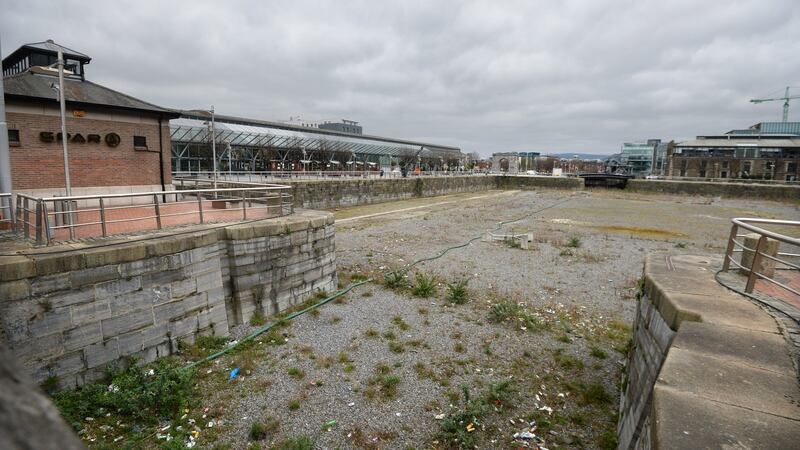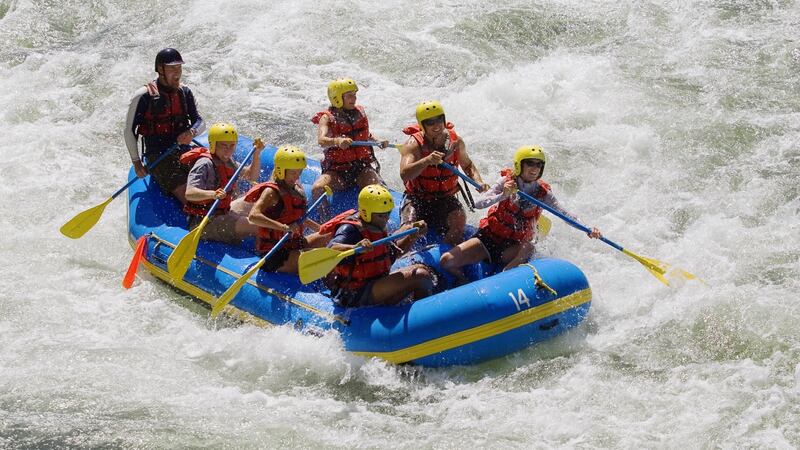Decent ideas occasionally can be drowned in a tsunami of well-meaning but overwrought criticism. It only takes a few key people to oppose something, a negative narrative develops and gets entrenched, and before you know it the idea is gone, dead, buried under a pile of scorn and mockery.
That is what appears to be happening to the proposal by Dublin City Council to build a whitewater rafting facility in the river Liffey at George's Dock and Custom House Quay in the north inner city. The scale and emotional depth of the near-hysterical opposition to it suggests there is more going on here than simply lots of people separately reaching a similar conclusion that it is a bad idea.
From the tone of some of the criticism, you would almost swear that the proposal was to build a literal white elephant, a statue the size of Liberty Hall of the world’s largest land mammal forged in white gold with the motif of the council engraved on its backside in diamonds, rising hundreds of feet out of the water like an infrastructural Godzilla to mock us.

People need to step back a bit and stop projecting their anger over other unrelated matters, such as homelessness and the lack of housing, on to the rafting proposal. That is what seems to be happening.
The original idea was to build a whitewater sports facility that would attract visitors from home and abroad to the north inner city. People would go kayaking or canoeing or river rafting, and it was envisaged that it could also be used for emergency services training.
It could also be used as a springboard for further development of other river facilities – the council referred to it as a potential “anchor project” for the Liffey. Such terminology seems a little unwise when you’re talking about a water facility, especially when the idea appears to be sinking to the bottom already.
It was first proposed by council officials more than two years ago at a projected cost of about €12 million, before that estimate rose to €23 million – and now, it appears, to about €25 million. Councillors approved it in December 2019, which was when the hysterical opposition to it first took hold – on Twitter, of course. Where else but the digital nursery for most Irish media and political hysteria?
The narrative that took hold online was that this was some sort of Ceausescu-like vanity project by council officials, who care not a whit for the real problems of the capital, such as the lack of housing, street homelessness, the lack of cycling infrastructure, or (insert unrelated issue here). It was mass whataboutery, fuelled by vague notions about the “liveability” of the city.
Anti-tourism vibe
The project wouldn’t have taken from the funding for those other issues, but why let facts get in the way of a social media pile-on? Most of the raft facility’s development cost was supposed to come from a €2 billion urban renewal fund that the council had hoped to tap for €19 million of the total. It wasn’t coming from the social housing budget.
December 2019 was shortly before the general election, prior to the pandemic, when housing was the biggest issue facing the State. It still is. The narrative 17 months ago also incorporated an anti-tourism vibe perpetrated mostly by people on the left of the political spectrum. Too many hotels, too many visitors clogging up the streets and stepping over homeless people, too many flights clogging up the atmosphere. Tourism bad, opposition to tourism good.
Remember that vibe? It was the same mindset that scuppered a plan for a Japanese hotel company to invest more than €30 million to redevelop an old Magdalene laundry site on Sean MacDermott Street. Victims of the barbarity of the laundries understandably were opposed. But preventing much-needed job creation in the inner city is not necessarily a good way for the rest of us to address the wrong that was done to those women. Now the weeds grow ever higher on that site and the investment is gone.

The anti-tourism vibe was fine and well when we took the swell of tourists for granted before the pandemic. Now look at the state of the sector. Coronavirus has destroyed it, and hundreds of thousands of livelihoods. It has often been argued in this column in the past that we should be slow to restrict tourism, because we will miss it when it is gone.
The Government, spooked by the ferocity of the opposition to the rafting project on social media (from people angry about other things), now appears opposed to the idea and is refusing to finance it. The €2 billion fund that had been targeted is overseen by the department headed up by Minister for Housing Darragh O’Brien, who probably senses the danger of another public shellacking.
Drink culture
The rafting proposal isn’t quite dead in the water yet, as the council insists it can find other funding sources. But it is collapsed on the riverbank, heaving for breath and coughing its lungs up. Yet, examined on its own merits with a cool eye, it addresses a key need that has bedevilled national tourism for decades: a shortage of physical attractions.
It is a long-running strategic problem for Irish tourism – what are people supposed to do here beyond looking at the scenery and drinking in pubs? The Guinness Storehouse has been the nation’s top tourist attraction for years – more drink culture. There has long been a recognition at the top levels of government that more facilities must to be built to evolve Ireland’s tourism offering. That applies whether it is international visitors or domestic tourists, who now look set to become a more important part of the mix after the virus.
The national Tourism Product Development Strategy, devised after a report from a group chaired by Dan Flinter, who is chairman of The Irish Times board, acknowledged 14 years ago that major attractions needed to be built. When I was an undergraduate student studying tourism and hospitality at Cathal Brugha Street more than 20 years ago, it was a problem even then. If it isn't addressed soon, it will remain a problem into the future.
It seems logical that Dublin City Council would tap State funding to build such a facility, or something like it. A similar scheme in Cardiff has been a huge success.
Unfortunately for the Dublin project’s promoters in the executive branch of the council, the whitewater rafting idea has now become a convenient scapegoat for political criticism of everything else that is wrong in the country. It is a blank canvas upon which to project your particular grievances. It probably will never be built, which is a pity.










